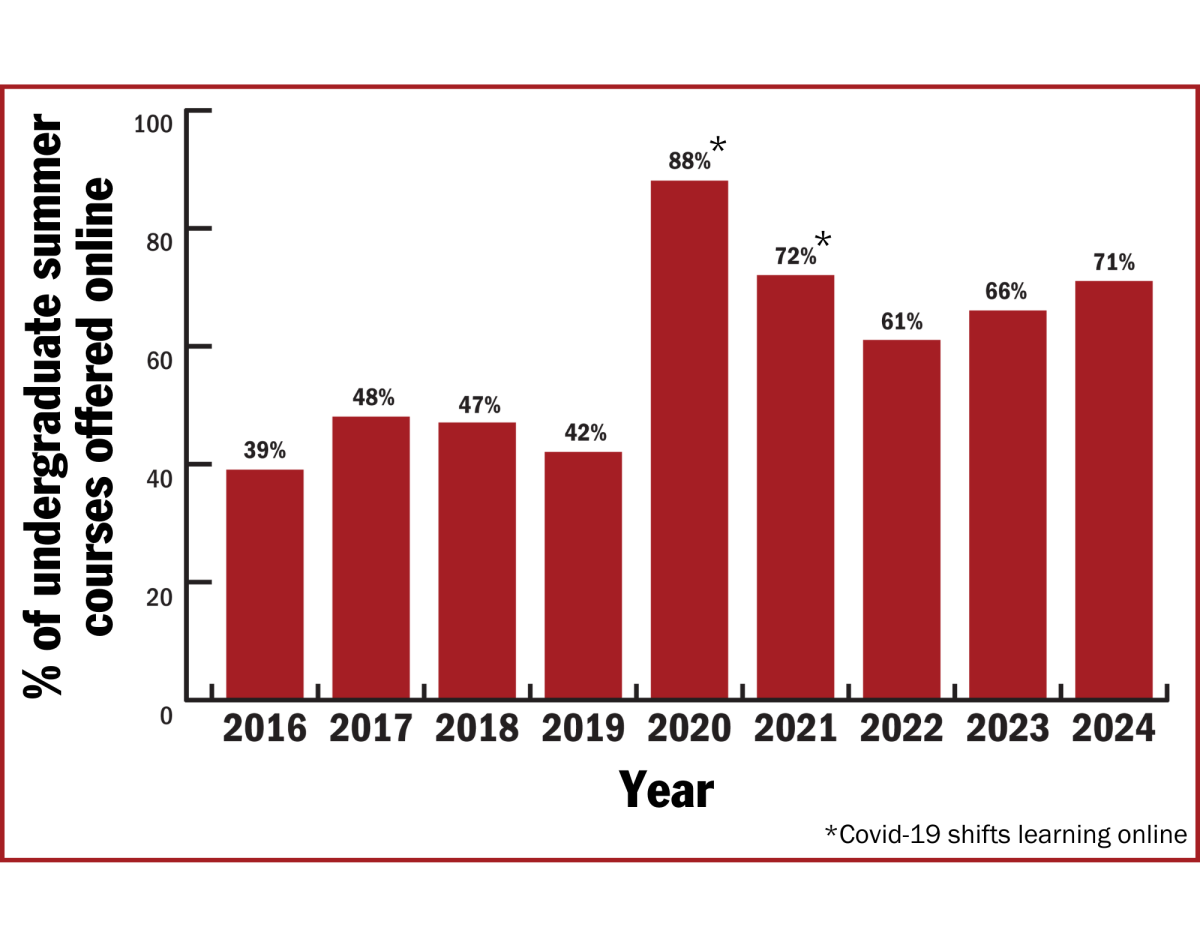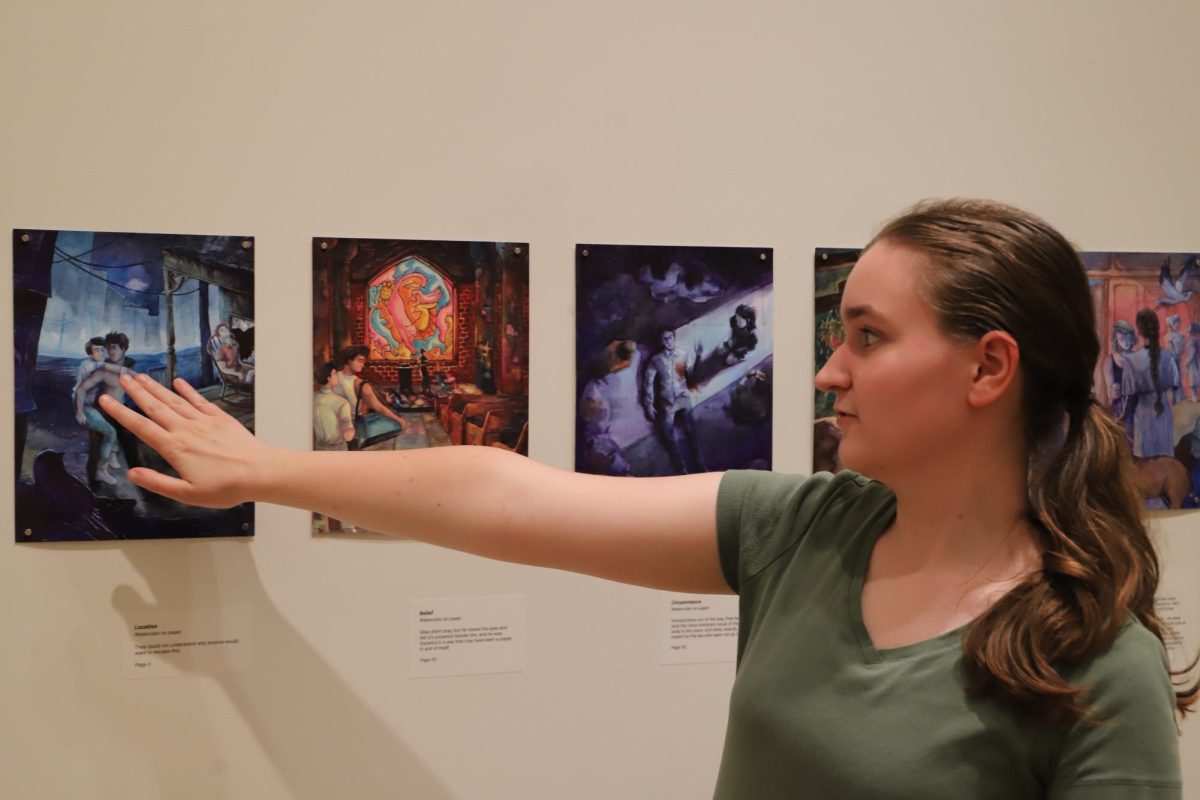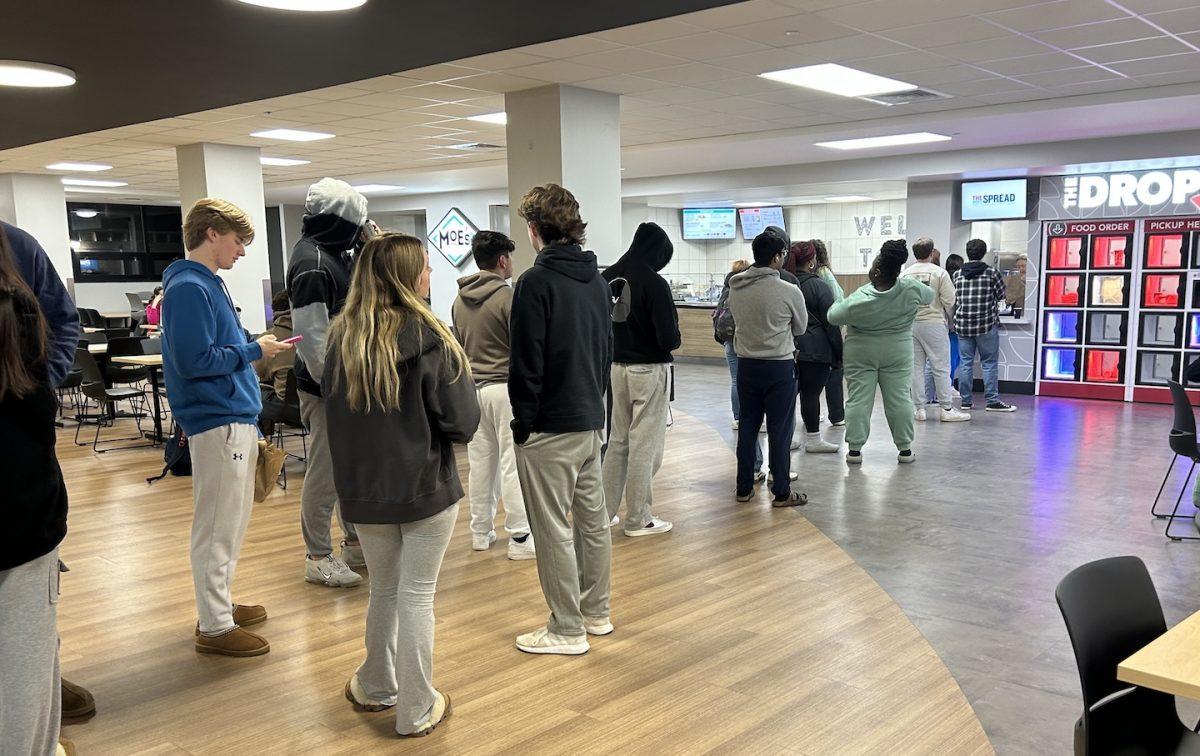Meadow Monticello ’26 decided she wanted a Hawk Wrap for dinner one night last semester. She went through the ordering process on the Hawk Eats Mobile Order app and received a message saying her order would be ready in 30 minutes. After nearly an hour, she finally received her meal.
When Monticello bit into her wrap, though, there was no chicken or sauce inside. Instead, the sandwich contained only lettuce, onions and a single frozen blueberry.
Monticello is not alone. Other students have struggled with food orders ever since the university launched The Drop last semester. The Drop, located in The Kettle at Campion, formerly known as Campion Food Court or DB, is a mobile order ghost kitchen, a restaurant style that was popularized after the pandemic, where multiple restaurants share a single kitchen. This means that at The Drop, a few employees make the food for Auntie Anne’s, Jamba Juice, Burgers and Fries, The Spread, and Hawk Wrap in a single space.
Taryn Bellamy ’24 received a raw cheeseburger in early February.
“I threw it in the air fryer because I was starving and I didn’t feel like cooking,” Bellamy said. “I didn’t complain about it because I know DB is always swamped.”
Manny Nkrumah ’26 said in his experience, incorrect orders compound problems like wait times for food.
“Things that you order aren’t included in your order,” Nkrumah said. “You’ve got to come back and then ask for it. It’s just a whole process.”
In the last month, waiting times for orders have sometimes exceeded four hours.
Xavier Slaughter ’26 had to delay his Feb. 6 plans because of an unexpectedly long wait time.
“I was waiting to go to my friend’s birthday party, and it took them 60 minutes to make [my] food,” Slaughter said. “It said on the timer it was only gonna take 30. We’re all sitting here, and there was a line going all the way back to the door. It was insane.”
Long wait times for food have coincided with long lines at The Drop. Students waiting for their food or trying to speak to the expeditor behind the counter line up in front of the window, waiting for some development in their order. Sean Cesarini ’27 was one of these students Feb. 6.
“I ordered [an] hour and a half ago and 30 minutes later, [the app] said my order was ready,” Cesarini said. “And I came here, they said they haven’t even gotten the printout paper for it yet. So I told them my name. Then they just started making it then and there.”
In response to written questions from The Hawk, Aramark’s marketing and communications team said the wait time presented on the app is based on the expected time it takes to make each meal in the queue.
“It is important to remember that these are calculated by the Transact mobile ordering platform using an algorithm that factors in several variables,” the team wrote. “Most importantly, is how many tickets are currently in queue at the time an order is placed as well as the ‘prep time’ that is associated with each item currently in the queue.
“For instance, if there are 20 orders in queue and each item has been researched, tested and programmed to take an average of 2 minutes to cook-to-order, bag, expedite and notify the guest, the wait time will reflect 40 minutes.”
The team also wrote that The Drop receives over 600 orders per day, with an average of 4,600 transactions per week. This number is an increase of 1,000 transactions per week compared to the number of transactions in DB last year.
Before The Drop was constructed, students could communicate directly with the employee who was preparing the meal. The Drop’s current focus on mobile orders and its ghost kitchen prevents this customer-to-chef communication.
Slaughter preferred the old setup’s consistency and clear window into the food preparation process.
“This is more aesthetically pleasing, but I’ll take convenience and speed over aesthetics any day,” Slaughter said.
Monticello said despite the problems she has experienced, she understands the employees’ difficult position of having to cook for so many students.
“[The mobile order system is] harder on the customer, but it’s also harder on the employees too,” Monticello said. “I think it’s difficult for them, especially when they have to have so many orders coming in at once.”
































